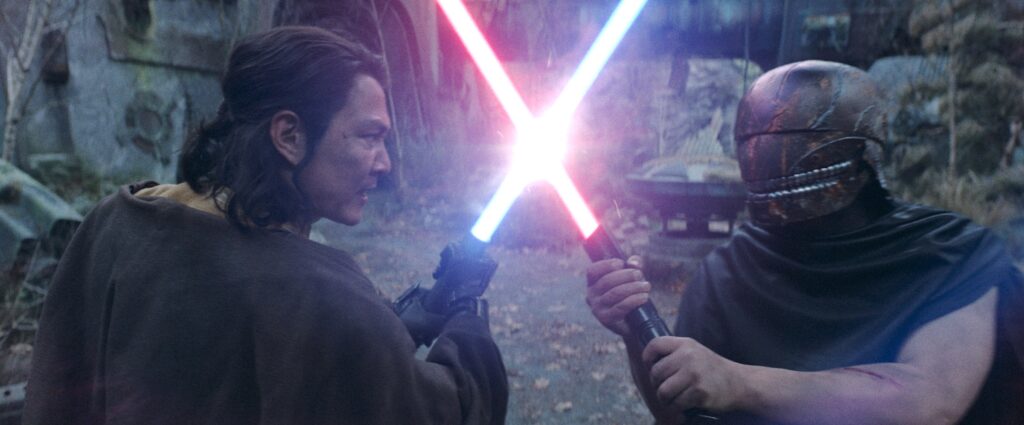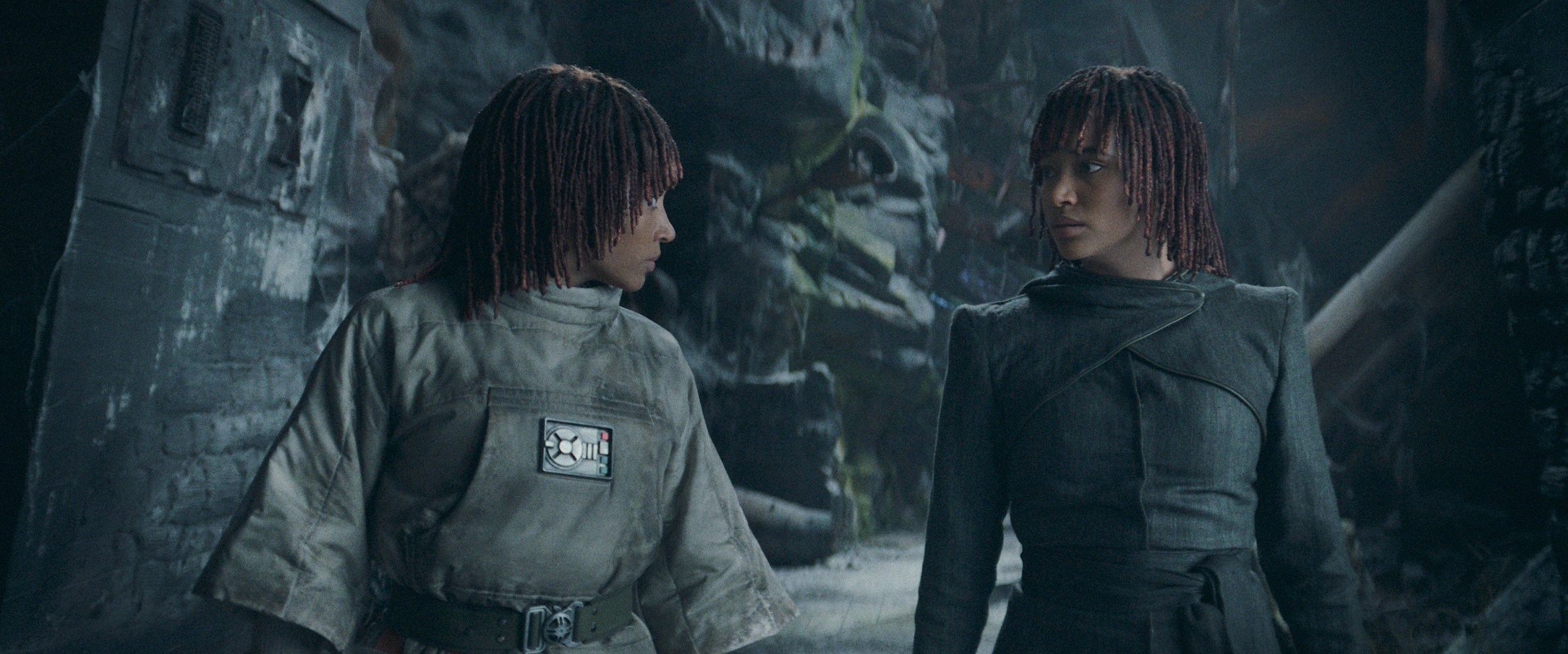At the risk of evoking Woody Allen in any context these days, the old Catskills comedy gag he quotes at the beginning of Annie Hall has endless applications. The joke is two people complaining about a restaurant that’s disappointed them: “The food at this place is really terrible… And such small portions!”
Allen recontextualizes that as a metaphor about life, a sad, miserable, lonely experience that’s over too quickly. For me, the irony inherent in that cheesy gag — the idea of complaining you didn’t get enough of something you didn’t like — is tailor-made to describe my experience with Disney Plus’ latest live-action Star Wars series, The Acolyte. Disney recently announced the show isn’t being picked up for a second season. I shouldn’t be surprised: The first season was deeply flawed, sometimes yell-at-the-television levels of baffling. And yet I’m exasperated by its cancellation, because the story stopped just when it finally hit a point of real potential.
Season 1 of The Acolyte was messy and frustrating. The story centers on a pair of Force-sensitive twins, Mae and Osha, both played as adults by Amandla Stenberg. Raised together in a hidden commune on the planet Brendok, Mae and Osha were separated in a childhood event that left each sister thinking the other one was dead. Osha trained with the Jedi and eventually left the order before completing that training. Mae ended up in the hands of a mysterious Sith Master. The first season spends a lot of time on obfuscating all of that, parceling out information in such stingy little packages that viewers have to get halfway through the season’s eight-episode run before they really have a sense of who our protagonists are or what they want.
The entire first-season story is told out of order in an attempt to gin up mystery and intrigue, but the big reveals about what really happened are so heavily foreshadowed or so confusingly executed that they never land as effective drama. Three of season 1’s major characters are introduced only after they’ve been killed, or as they’re being killed. And all the while, the audience is expected to stay engaged about the mystery of why they’re dying without knowing who they are.
They’re expected to stay engaged as Mae and Osha have almost exactly the same argument over and over in episode after episode, first as children and then as adults, without ever really hearing each other. All their personal progress is saved for the finale, where both women abruptly flip their moral codes. Mae accepts a solution to their situation that feels radically out of character for her, and Osha heads off with Mae’s Sith Master to accept his training. There’s a sense by the end of season 1 that we’ve finally gotten through all the veils that showrunner Leslye Headland and her writers threw over these characters’ basic histories. We finally know what kind of story they’re telling, and they can get down to it at last.
Except that now it seems like we’ll never get the real narrative this season was setting up. In hindsight, season 1 of The Acolyte plays like a muddled backstory for an angry, angsty RPG protagonist, someone full of believably human contradictions and conflicts who’s ready to get up to some exciting drama. The clearest and most engaging part of season 1 seemed likely to be the center of season 2: the push-and-pull relationship between Osha and Darth Plagueis’ still-unnamed apprentice (played by Manny Jacinto and operating as “Qimir,” though Headland has teased that his real identity would be a season 2 reveal).
Master-apprentice relationships have given the Star Wars franchise some of its richest, most complicated drama, and these two certainly promised a lot more of it to come — particularly given the conflict between Osha’s past Jedi training and her newfound determination to embrace her own emotions and stop putting everyone else’s desires in front of hers. And then there was the promise of Darth Plagueis on top of that — not necessarily as a known element from any particular story, but as a potentially demanding third wheel in Osha and Qimir’s already-delicate detente.
Above all, there’s a sense that The Acolyte had finally hit its stride. Once the series got the throat-clearing and teasing out of the way and just let its characters move forward instead of endlessly negotiating the past, it felt like it was finally moving toward ground we haven’t seen in a Star Wars TV show before. Osha was always bound to have significant ethical and personal moral struggles during Sith training. She’s been hardened by trauma and betrayal, but she still seems too kindhearted to accept the teaching that other people don’t matter. Exploring her evolving ethos (and Qimir’s, since his starting point was broad and reactive enough to leave plenty of space for growth) might have been a way to actually build the lore around the Sith, instead of just echoing the same Jedi/Sith conflicts over and over the way, for instance, Star Wars: Visions does.
Granted, this is all probably wishful thinking. Season 1 is packed with miscalculations about what viewers needed to know in the protagonist’s present to make the past worth exploring. This story could have been thrilling if it had been told in a different way — check out True Detective: Night Country for a broadly similar structure that spends an entire season teasing “What really happened to these two women in the past?” while still building compelling present-day characters and a mesmerizing season arc. Instead, season 1 skimps on seemingly crucial details (like briskly skimming past the death of Mae and Osha’s entire coven, leaving viewers to fill in the blanks) while wasting time on much smaller bits of business. It’s certainly possible that season 2 would have been just as exasperatingly clumsy and misfocused, in entirely different ways.
It’s just irritating to have gotten to this point in the story and then to have it end. It feels like we just finished a book’s lengthy prologue, only to be told the author never actually finished the rest of the novel. Or, to bring it back to that old Catskills gag: The appetizer was pretty sour and half-baked at most. But I was still holding out hope that with all the ingredients finally on the table, there was a satisfying meal on the way. Seems like we’ll never know.


